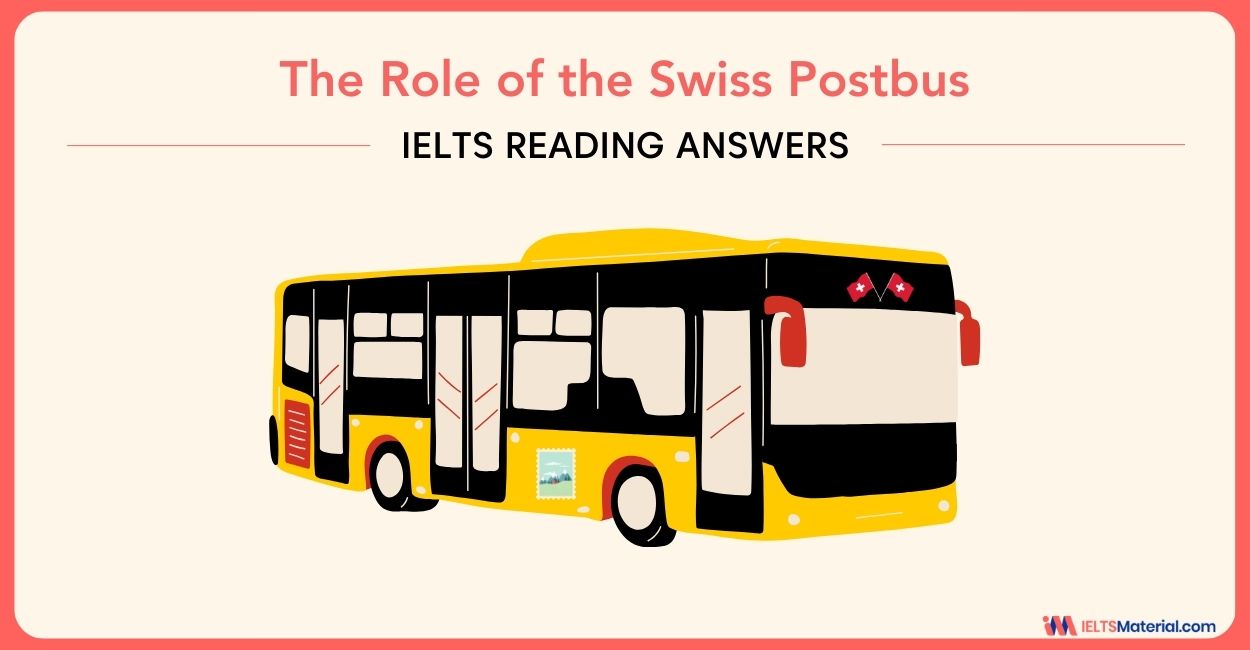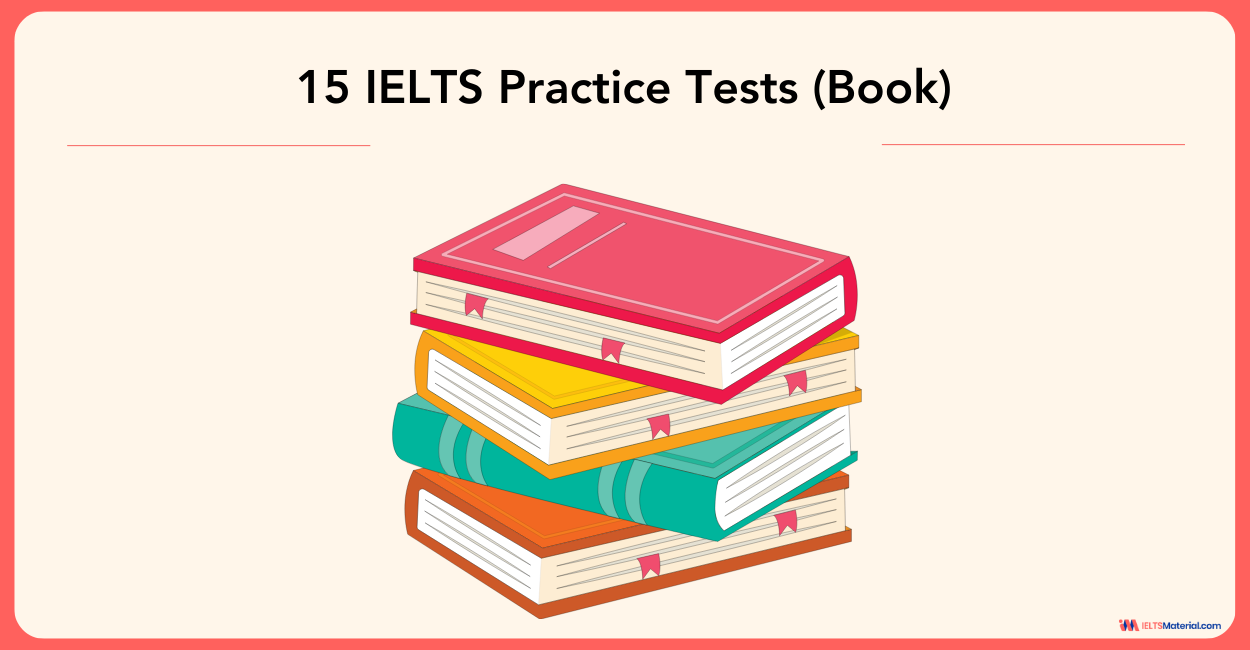Having a Laugh – IELTS Academic Reading Answers
15 min read
Updated On
-
Copy link
Prepare yourself with the passage, 'Having a Laugh – IELTS Academic Reading Answers', and familiarize yourself with the question types as well as strategies to attempt the Reading Module to score a band 8+ in the IELTS Exam.
Table of Contents
- Types Of Questions in the Passage - Having a Laugh – IELTS Academic Reading Answers
- Strategies to Attempt Having a Laugh – IELTS Academic Reading Answers for Achieving a Band 8+
- Reading Passage - Having a Laugh – IELTS Academic Reading Answers
- Answers with Location and Explanations for Having a Laugh – IELTS Academic Reading Answers

Limited-Time Offer : Access a FREE 10-Day IELTS Study Plan!
With consistent practice and solving a variety of passages, you can achieve your desired score in IELTS Exam. By solving passages such as 'Having a Laugh – IELTS Academic Reading Answers', you can improve your reading skills. The passage will help those candidates who face issues finding out and understanding reading answers to prepare better for achieving a band 8+. It is vital to practice consistently to be aware of the strategies and the question types that one might encounter.
With the IELTS Academic Reading passage, you will learn how to be strategic and attempt the Section 1. The answers are provided so that you can attempt the passage by yourself and also check the answers while noting the areas of improvement. This will help you to understand your level of progress and continue with your preparation to achieve a band 8+.
Let's check it out!
Connect with our band 9 IELTS Trainers to crack your IELTS Reading in no time! Book a FREE Demo.
Types Of Questions in the Passage - Having a Laugh – IELTS Academic Reading Answers
To achieve a higher band score in the IELTS Reading Module, you need to familiarize yourself with the exam conditions. By preparing yourself on a regular basis with different passages and topics, the level of precision to find the correct answer will be enhanced. Since the passages will include different question types, it is better to know how to tackle them individually. By trying out all types of questions, you will be able to build your reading skills and finish the exam on time.
There are 14 questions in ‘Having a Laugh’. Give a good read to the passage, then start solving it with us. The question types found in the passage are:
- IELTS Reading Multiple Choice Questions (Q.1-Q.5)
- IELTS Reading Summary Completion with Tips & Practice Tests (Q.6-Q.10)
- IELTS Reading Yes, No, Not Given (Q.11-Q.14)
Strategies to Attempt Having a Laugh – IELTS Academic Reading Answers for Achieving a Band 8+
Before attempting the passage 'Having a Laugh – IELTS Academic Reading Answers', there are certain tips which you need to keep in mind. These will certainly help you identify the right approach of searching for information and choosing answers to achieve a higher IELTS Band Score. Here are a few strategies to consider while preparing yourself and attempting the passage.
- Firstly, never read the entire passage without looking at the questions first. You must try to identify the keywords given in the question through skimming and scanning. If you read the passage, this would just consume a lot of time and you may end up assuming most of the answers.
- As the passage is from Section 1, put your timer on and work on it for only 20 minutes. Remember that all passages in the Academic Readin will be longer. Therefore, you need to check your level of progress and identify the area where you find yourself most difficult. Remember, Time Management for IELTS Reading is a very important aspect.
- Read the instructions given in the question and follow that while you put down your answers.
- Before reading the passage, read the question and select the keywords. Check the keyword possibilities if the question statement is short on information. Then, use the keywords, read the passage to find the relevant information. Therefore, you must learn How to Ace IELTS Reading with 'Keyword Technique'.
- Don’t spend a lot of time looking for an answer to just one question. If you are unable to find it, move on to the next. Focus more on the easy answers.
Normally, the answers would come in the similar order as that of the questions. - Check you spellings when you are writing the answers since using wrong spellings can affect your band scores.
- Scan the passage for synonyms or paraphrased words of the keywords for which you must enhance your IELTS Vocabulary. When you have highlighted the keywords, swiftly read the text to look for paraphrases or synonyms. Match the highlighted words in the questions with their synonyms in the text. Once you find both sets of keywords, cross-check them to find the answer.
- In the Multiple-Chocie questions, find the best option by matching the meaning rather than just the keywords. In this type, you can try the elimination method where you would narrow down your options by eliminating the ones which are not relevant.
- In the Summary Completion questions, find out whether the gap has to be filled with an adverb, adjective, noun or verb. If your sentence is grammatically wrong, you would have selected the wrong answer. Therefore, practice the main topics from IELTS Grammar.
- You must always read how you need to provide answers. This will vary depending on the question types. For Yes/No/Not Given question type, if the facts match, the answer is correct so it would be yes, and in case it doesn’t match, it is No. If you are unable to find the answer or unsure of it, mark it NOT GIVEN.
Grab the IELTS Reading (Academic) Test Guide: Essential Tips, Strategies, and Practice Tests today and take a step towards success!
Reading Passage - Having a Laugh – IELTS Academic Reading Answers
Having a Laugh
The findings of psychological scientists reveal the importance of humour.
Humans start developing a sense of humour as early as six weeks old, when babies begin to laugh and smile in response to stimuli. Laughter is universal across all human cultures and even exists in some form in rats, chimps, and bonobos. Like other human emotions and expressions, laughter and humour are psychological scientists with rich resources for studying human psychology, ranging from the development of language to the neuroscience of social perception.
Theories focusing on the evolution of laughter point to it as an important adaptation for social communication. Take, for example, the recorded laughter in TV comedy shows. Back in 1950, US sound engineer Charley Douglass hated dealing with the unpredictable laughter of live audiences, so started recording his own ‘laugh tracks’. These were intended to help people at home feel like they were in a social situation, such as a crowded theatre. Douglass even recorded various types of laughter, as well as mixtures of laugher from men, women, and children. In doing so, he picked up on a quality of laughter that is now interesting researchers: a simple ‘haha’ communicates a remarkable amount of socially relevant information.
In one study conducted in 2016, samples of laughter from pairs of English-speaking students were recorded at the University of California, Santa Cruz. A team made up of more than 30 psychological scientists, anthropologists, and biologists then played these recording to listeners from 24 diverse societies, from indigenous tribes in New Guinea to city-dwellers in India and Europe. Participants were asked whether they thought the people laughing were friends or strangers. On average, the results were remarkably consistent: worldwide, people’s guesses were correct approximately 60% of the time.
Researchers have also found that different types of laughter serve as codes to complex human social hierarchies. A team led by Christopher Oveis from the University of California, San Diego, found that high-status individuals had different laughs from low-status individuals, and that strangers’ judgements of an individual’s social status were influenced by the dominant or submissive quality of their laughter. In their study, 48 male college students were randomly assigned to groups of four, with each group composed of two low-status members, who had just joined their college fraternity group, and two high-status members, older student took a turn at being teased by the others, involving the use of mildly insulting nicknames. Analysis revealed that, as expected, high-status individuals produced more dominant laughs and fewer submissive laughs relative to the low-status individuals. Meanwhile, low-status individuals were more likely to change their laughter based on their position of power; that is, the newcomers produced more dominant laughs when they were in the ‘powerful’ role of teasers. Dominant laughter was higher in pitch, louder, and more variable in tone than submissive laughter.
A random group of volunteers then listened to an equal number of dominant and submissive laughs from both the high- and low-status individuals, and were asked to estimate the social status of the laughter. In line with predictions, laughers producing dominant laughs were perceived to be significantly higher in status than laughers producing submissive laughs. ‘This was particularly true for low-status individuals, who were rated as significantly higher in status when displaying a dominant versus submissive laugh,’ Oveis and colleagues note. ‘Thus, by strategically displaying more dominant laughter when the context allows, low-status individuals may achieve higher status in the eyes of others.’ However, high-status individuals were rated as high-status whether they produced their natural dominant laugh or tried to do a submissive one.
Another study, conducted by David Cheng and Lu Wang of Australian National University, was based on the hypothesis that humour might provide a respite from tedious situations in the workplace. This ‘mental break’ might facilitate the replenishment of mental resources. To test this theory, the researchers recruited 74 business students, ostensibly for an experiment on perception. First, the students performed a tedious task in which they had to cross out every instance of the letter ‘e’ over two pages of text. The students then were randomly assigned to watch a video clip eliciting either humour, contentment, or neutral feelings. Some watched a clip of the BBC comedy Mr. Bean, others a relaxing scene with dolphins swimming in the ocean, and others a factual video about the management profession.
Questions 1-5
Choose the correct letter, A,B,C or D.
Write the correct letter in the boxes 1-5 on your sheet.
1 When referring to laughter in the first paragraphs, the writer emphasises.
A its impact on language.
B its function in human culture.
C its value to scientific research.
D its universality in animal societies.
2 What does the writer suggest about Charley Douglass?
A He understood the importance of enjoying humour in a group setting.
B He believed that TV viewers at home needed to be told when to laugh.
C He wanted his shows to appeal to audiences across the social spectrum.
D He preferred shows where audiences were present in the recording studio.
3 What makes the Santa Cruz study particularly significant?
A the various different types of laughter that were studied.
B the similar results produced by a wide range of cultures.
C the number of different academic disciplines involved.
D the many kinds of people whose laughter was recorded.
4 Which of the following happened in the San Diego study?
A Some participants became very upset.
B Participants exchanged roles.
C Participants who had not met before became friends.
D Some participants were unable to laugh.
5 In the fifth paragraph, what did the results of the San Diego study suggest?
A It is clear whether a dominant laugh is produced by a high- or low-status person.
B Low-status individuals in a position of power will still produce submissive laughs.
C The submissive laughs of low- and high-status individuals are surprisingly similar.
D High-status individuals can always be identified by their way of laughing.
Question 6-10
Complete the summary using the list of words, A- H below.
Write the correct letter, A-H in the boxes 6-10 on your answer sheet.
The benefits of humour
In one study at Australian National University, randomly chosen groups of participants were shown one of three videos, each designed to generate a different kind of 6………………….. . When all participants were then given a deliberately frustrating task to do, it was found that those who had watched the 7…………………….. video persisted with the task for longer and tried harder to accomplish the task than either of the other two groups.
A second study in which participants were asked to perform a particularly 8……………………… task produced similar results. According to researchers David Cheng and Lu Wang, these findings suggest that humour not only reduces 9…………………… and helps build social connections but it may also have a 10……………………. Effect on the body and mind.
| A laughter | B relaxing | C boring |
| D anxiety | E stimulating | F emotion |
| G enjoyment | H amusing |
Question 11-14
Do the following statements agree with the views of the writer in the Reading Passage?
In boxes 11-14 on your answer sheet, write
YES – if the statement agrees with the views of the writer
NO – if the statement contradicts the views of the writer
NOT GIVEN – if it is impossible to say what the writer thinks about this
11 Participants in the Santa Cruz study were more accurate at identifying the laughs of friends than those of strangers.
12 The researchers in the San Diego study were correct in their predictions regarding the behaviour of the high-status individuals
13 The participants in the Australian National University study were given a fixed amount of time to complete the task focusing on employee profiles.
14 Cheng and Wang’s conclusions were in line with established notions regarding task performance.
Looking to improve your IELTS Speaking skills? Sign up for a free session with our expert instructors today!
Answers with Location and Explanations for Having a Laugh – IELTS Academic Reading Answers
Now, let us see the answers given for "Having a Laugh – IELTS Academic Reading Answers." While looking through the right answers, you should try to understand why the wrong answers are incorrect. This analysis helps you analyze your own answer and, in turn, you can develop your skills in getting an 8+ IELTS Reading Band Score. The answers with explanations for the passage are given below.
| Answer | Question Type | Answer Location | Answer Explanation |
| 1. C | Multiple Choice Question | First paragraph, lines 3-5 | Take a look at the lines, “Like other human emotions and expressions, laughter and humor provide psychological scientists with rich resources for studying human psychology, ranging from the development of language to the neuroscience of social perception.” The writer highlights the importance of science in understanding laughter. They see humor as a window into human behavior for psychologists. Hence, the answer is C (Its value to scientific research). |
| 2. A | Multiple Choice Question | Paragraph 2, Line 2-5 | The specified line of Paragraph 2 states, “Back in 1950, US sound engineer Charley Douglass hated dealing with the unpredictable laughter of live audiences, so started recording his own ‘laugh tracks’…” The writer credits Charley Douglass with recognizing the importance of shared laughter. Douglass addressed this by creating laugh tracks, aiming to enhance the enjoyment of humor even in large, impersonal settings like crowded theaters. |
| 3. B | Multiple Choice Question | Paragraph 3, Line 3-7 | In the specified line of Paragraph 3, it is communicated that “then played these recordings to listeners from 24 diverse societies. On average the results were remarkably consistent: worldwide, people’s guesses were correct approximately 60% of the time.” Here, 24 diverse societies refer to a wide range of cultures, results were remarkably consistent which means similar results. Hence, the answer is B (the similar results produced by a wide range of cultures). |
| 4. B | Multiple Choice Question | Paragraph 4, Line 8-9 | In the specified line of Paragraph 4, it is communicated by the author that, ‘Laughter was recorded as each student took a turn at being by the others, involving the use of mildly insulting nicknames…’ Here, being by the others refers to exchanged roles. Hence, the answer is B (Participants exchanged roles). |
| 5. D | Multiple Choice Question | Paragraph 5, Line 5-9 | In the specified line of Paragraph 5, it is communicated that “Thus, by strategically displaying more dominant laughter when the context allows, low-status…to do a submissive one.” Here, high-status individuals were rated as high-status whether they produced their natural laugh or tried to do a submissive one, which means that High-status individuals can always be identified by their way of laughing. Hence, the answer is D (High Status Individual). |
| 6. F | Summary Completion | Paragraph 6, Line 6-8 | In Paragraph 6 it is communicated that “The students then were randomly assigned to watch a video clip eliciting either humor, contentment, or neutral feelings…management profession…” In an experiment examining the influence of emotions on task performance, participants were randomly assigned to watch one of three video categories: a side-splitting Mr. Bean clip to induce humor, a serene scene of dolphins gliding through the ocean to evoke contentment or a neutral, informative video about the management profession. Here, it depicts emotions. Hence, the answer is F(Emotion). |
| 7. H | Summary Completion | Paragraph 7 | In paragraph 7, it is communicated that “The students then completed a task requiring persistence in which they were asked to guess the potential …other two groups. ”When faced with a frustrating task, participants who watched a funny Mr. Bean video exhibited greater persistence. They spent significantly more time working on the task, making twice as many attempts as the other two groups. This suggests that humor can boost motivation and effort. Hence, the answer is H( amusing). |
| 8. C | Summary Completion | Paragraph 8,Line 3 | The author says here, “Cheng and Wang then replicated these results in a second study, during which they had participants complete long multiplication questions by hand…either of the other groups.” Here, participants completed long multiplication questions by hand so participants were asked to perform a particularly boring task, participants who watched the humorous video, completed more questions correctly which means they produced similar results. Hence, the answer is C (boring). |
| 9. D | Summary Completion | Final Paragraph, Lines 1-2 | Take a look at lines 1-2 in the final paragraph, “ Although humor has been found to help relieve stress and facilitate social relationships.” In this line it explains that relief is reduced, stress is anxiety and it facilitates social relationship that refer to building social connections. Hence, the answer is D (Anxiety). |
| 10. E | Summary Completion | Final Paragraph, Lines 1-2 | In the final paragraph it is communicated that” we suggest that humor is not only enjoyable but more importantly, energizing.” Here energizing means that it has a stimulating effect on the body and the mind. Hence, the answer is E (Stimulating). |
| 11. Not Given | YES/NO/ NOT GIVEN | N.A. | The information mentioned in the statement is not found in the passage. |
| 12. Yes | YES/NO/ NOT GIVEN | Paragraph 4, Line 9-11 | In paragraph 4, the author talks about the predicted results of the San Diego study, “ Analysis revealed that, as expected, high-status individuals produced more dominant laughs and fewer submissive laughs relative to the low-status individuals. . .. .”. Here, as expected, refers to as predicted. This means the researchers were correct in their predictions about high-status individual. |
| 13. No | YES/NO/NOT GIVEN | Paragraph 7, Line 4-5 | In the specified line of Paragraph 7 it is communicated that “We find about the task focusing on employee profiles in the Australian National University study in paragraph no. 7. Take a look at lines 4-5 here, “ . .. Participants were allowed to quit the task at any point. .”This means that there was no fixed time to complete the task |
| 14. No | YES/NO/NOT GIVEN | Final Paragraph, Line 1-3 | In the specified line of the final Paragraph it is communicated that “Although humor has been found to help relieve stress and facilitate social relationships….” Cheng and Wang’s findings challenged the traditional view of task performance. While conventional wisdom suggests focusing solely on the task at hand and avoiding distractions like humor, their research found that humor can help relieve stress and build social connections. |
Enroll into our Free IELTS Webinar and learn more about techniques to improve your reading speed.
With consistent practice, you will be able to level up your preparation for the reading module. This will help you get the confidence for the final exam day by consciously being aware of the strategies to be used. Remember that time management and focusing on the keywords given in the question while searching for answers to achieve a band 8+. So, start knowing the key strategies on how to increase your speed and accuracy while reading the questions regarding passages.
Check More Reading Passages :
Also Check:

Start Preparing for IELTS: Get Your 10-Day Study Plan Today!
Explore other Reading Articles
Recent Articles

Kasturika Samanta

Kasturika Samanta


Kasturika Samanta








Post your Comments